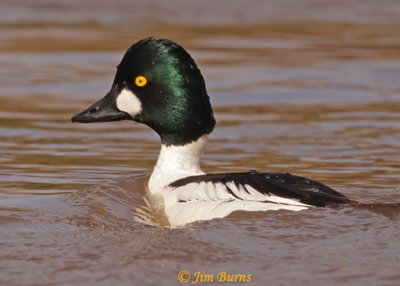In late February I caught wind of an immature Bald Eagle being seen on the lower Salt River, so one morning in early March with nothing more pressing to do I took a hike along the river hoping to add to my collection of photographs showing variation in the plumages of this species’ age groups. A brief glimpse of a huge bird without a white head, retreating upstream behind a wall of trees and brush, gave me an idea.
Instead of continuing up the trail on the bluff where open views of the river were few and far between, I decided to bushwhack to the water’s edge, find an opening clear of bushes and branches, and sit and wait for something to come to me. There are two things you need to know here. This was a few days after SRP began releasing water down the Verde from Bartlett Dam to accommodate excessive snowmelt from this winter’s bountiful storms, and I was downstream from the Salt-Verde confluence.
Earlier in the morning farther down the river I had noticed several common ducks species, Mallards, American Wigeons, Ring-neckeds, even the less common Common Mergansers, feeding slowly upstream against the current made stronger now by the upstream releases, then drift quickly back down, turn, and do it all over again. As I sat down on the bank, only feet from the water, at my “window” in the riverside brush, my field of view was narrow, about 120 degrees, but wide enough for photo ops if I stayed focused and vigilant for movement.
Ducks feeding upstream would be easy, ducks drifting quickly down with the current much harder but possible, the eagle I was hoping for in flight somewhere in between, eagles being relatively slow and methodical on the wing. I knew I would see ducks and knew a shot of the eagle might be wishful thinking, but what happened was one of those totally unexpected fortuities that make birding magic.
Minutes had passed with nothing in the air except a Solitary Sandpiper to which I failed to react because I was watching for large, eagle sized movement, not something small only inches above the water. I could hear wigeons whistling upstream, Mallards honking, and Ring-neckeds had fed past me against the current. Peering upstream through the brush, I suddenly saw ducks drifting down toward my window. All I could really make out through the lattice work of branches was dark heads and light bodies.
Not too excited . . . could be any of the species I had already seen that morning . . . probably the Ringers drifting down. . . they were the most common besides the wigeons . . . camera still in my lap . . . could it be scaup . . . were there even scaup on the river? And then, GASP, there they were, in my window, near my bank, so OMG close I felt I could reach out and touch them, almost too close to focus. Three pair of Common Goldeneyes! Eyes glittering in the perfect morning light, the males’ heads shimmering in the not-always-so-obvious iridescent green, I was so stunned I almost didn’t get the camera up in time, time for only half a dozen frames with the swift current.
Eagle? What eagle? Thoughts of eagles never pierced my euphoria the rest of the day. Years since my last sighting of goldeneyes, and never any of this beautiful species so close in perfect light, I knew I had the winter weather gods and SRP to thank because of the unusually high water levels and fast currents, else the goldeneyes would have just been puddling along out of sight down by the next dam. Sure, luck and circumstances beyond control, always the stuff of birders’ fever dreams.
